Breaking Down SBTi Carbon Benchmarks for Buildings (aka “how much upfront carbon is ok?”)
 tl;dr On your next project, set a carbon budget for the upfront carbon looking at the typology and the year of construction in the table below
tl;dr On your next project, set a carbon budget for the upfront carbon looking at the typology and the year of construction in the table below
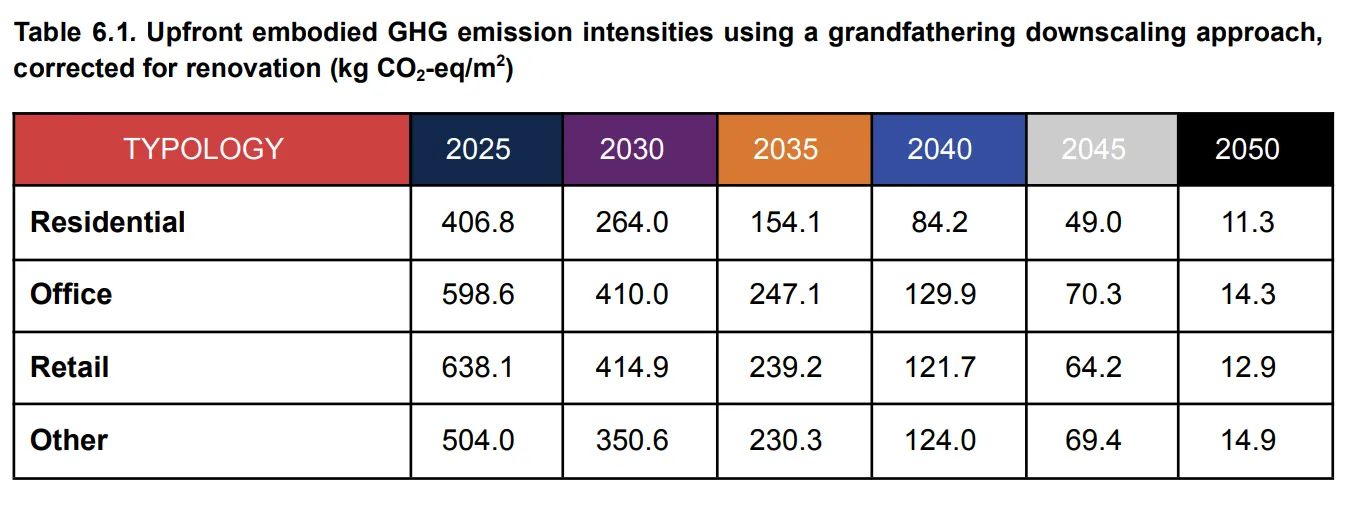
What is SBTi?
The Science Based Targets initiative (SBTi) is an organization focusing on doing science-based research which guides industries on how to align to a climate-neutral economy.

SBTi recently published a document for the project known as “A 1.5˚C pathway for the global buildings sector’s embodied emissions”, which ran from November 2022 to June 2023 and was performed by Ramboll with the support from Sweco.
This report showcases the methodology used for the development of the SBTi Carbon Benchmarks for buildings pathways which are aligned with a 1.5˚C climate change trajectory.
What was the SBTi Carbon Benchmarks for buildings methodology?
The SBTi Carbon Benchmarks for buildings methodology involves seven key steps:
- Understanding Embodied Emissions:
Embodied emissions are the upstream emissions from sourcing, producing construction materials, and emissions from transport to construction sites and demolition. They represent a significant portion of building-related emissions. - Setting Science-Based Targets:
SBTi provides a framework for setting targets that align with a 1.5°C climate change trajectory. These targets help in reducing embodied emissions in the construction sector. - Developing Embodied Emissions Pathways:
This includes creating a global decarbonization pathway for building typologies per square meter. It involves data collection and projection of future activities in the global building stock, including new construction and renovation rates. - Attribution Principles for Downscaling:
This step involves defining how the global carbon budget is divided among different building typologies, balancing equity and efficiency. - Aligning with SBTi Fundamentals:
The process aligns with SBTi’s Sectoral Decarbonization Approach (SDA) methodology, considering both absolute and emission intensity targets. - Emission Scope and Renovation vs. New Construction:
The methodology differentiates between emissions from new constructions and renovations, focusing more on upfront embodied emissions. - Application of Reduction Pathways:
Applying a specific reduction pathway to building typologies based on their emission contributions and future projections.
This methodology aims to establish a scientifically sound, equitable, and practical approach to reducing embodied emissions in the building sector, contributing significantly to climate change mitigation.
Table 6.1 from the SBTi Embodied-carbon-pathway-development-description report, showing the upfront embodied GHG emission intensities for various building typologies from 2025 to 2050 (measured in kg CO2-eq/m2):
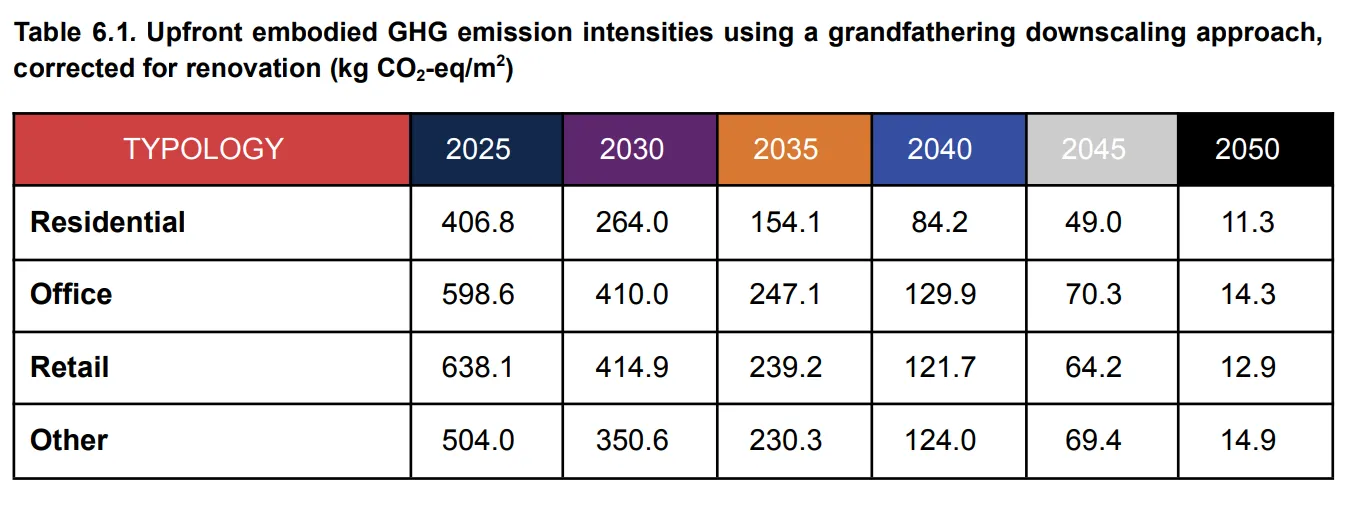
SBTi Carbon Benchmarks for buildings Report. This table is based on a grandfathering downscaling approach corrected for renovation*.
* Clarifying “Corrected for renovation”
The share of the global GHG budget that can be attributed to the building construction also includes renovation activities. The share, therefore, needs to be corrected to take this into account. Currently, the global renovation rate is about 1% based on the IEA’s net zero scenario for limiting global warming to 1.5°C (IEA, NZE scenario).
If this value is applied to the total building stock, then about 2,400 million m2 were renovated in 2020, whilst approximately 7,300 million new m2 were constructed. This implied that, in total, about 9,700 million m2 were renovated or added to the building stock in 2020. Therefore, in 2020 renovation accounted for about 25% of the total area that was either renovated or added as new buildings. The share of the total area that is either renovated or added as new buildings is projected to increase in the future as renovation rates on global scale need to increase from 1% to 2.5%. These projections are based on the IEA’s net zero scenario for limiting global warming to 1.5°C (IEA, NZE scenario).

SBTi Report on Building benchmarks, Table 5.6
The GHG emissions per m2 of renovation projects are about 50% lower than the upfront emissions related to new construction. This is based on the few available studies 16 and complemented with expert knowledge from previous LCA studies comparing the impacts of renovation with impacts from the construction of new buildings. Hence, 12.5% of the budget for buildings is reserved for renovation and 87.5% is kept for construction of new buildings. This number is aligned with current efforts to model the EU building stock, including both renovations and new construction. Therefore, the final share of the global GHG emission share that can be attributed to buildings 17 in 2020 amounts to the values showed in the table below. These shares evolve over time as the renovation rate needs to increase from 1% to 2.5%, therefore the share set aside for renovation increases.
The importance of benchmarks in the climate transition
Benchmarks play a pivotal role in the climate transition, acting as vital navigational tools guiding us towards a more sustainable and environmentally conscious future. In the context of global efforts to mitigate climate change, benchmarks offer clear, quantifiable targets that organizations, industries, and governments can aim for, providing a roadmap for reducing greenhouse gas emissions and other environmental impacts.
Translating abstract climate goals into actionable steps
The significance of benchmarks in the climate transition lies in their ability to translate abstract goals into concrete, actionable steps. For instance, by setting specific targets for reducing emissions in the construction sector, benchmarks like those developed by the SBTi Carbon Benchmarks for buildings project make it possible for businesses and policymakers to understand exactly what is required of them to align with global efforts to limit warming to 1.5°C above pre-industrial levels.
At 2050 Materials, we expanded on SBTi’s work to breakdown the benchmarks into specific building components, and to give indications of emissions targets per unit of conventional material. If you would like to see the early results of this research, reach out!
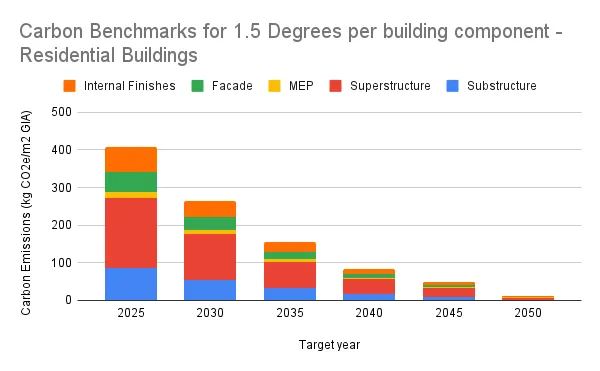
Measuring progress
Furthermore, benchmarks serve as a standard for measuring progress. They offer a means to assess how effectively different sectors and organizations are moving towards their sustainability goals. This is crucial for accountability and transparency, as it allows stakeholders, including investors, customers, and the public, to see which entities are genuinely contributing to the climate transition and which are falling behind.
Creating competition and attributing credit where it’s due
In addition, benchmarks foster innovation and competition. As industries strive to meet or exceed these standards, they are often pushed to innovate new technologies and practices. This drive towards innovation not only helps in meeting current targets but also in setting more ambitious goals in the future, thereby accelerating the pace of environmental improvement.
Aligning efforts of all sectors
Lastly, benchmarks play a role in unifying efforts across different sectors and geographies. Climate change is a global issue that requires coordinated action. By providing common targets, benchmarks help align the actions of diverse stakeholders, ensuring that efforts are mutually reinforcing and more impactful.
Integrating benchmarks in BIM and/or LCA processes
The integration of benchmarks, such as those provided by the Science Based Targets initiative (SBTi), into a Building Information Modeling (BIM) and Life Cycle Assessment (LCA) approach can significantly enhance decision-making in the construction sector. This integration ensures compliance and aids in setting and achieving sustainability targets. Here’s how it works:
- Informed Decision-Making:
BIM-LCA integration allows for the analysis of a building’s environmental impact throughout its lifecycle, from construction to demolition. By incorporating the SBTi Carbon Benchmarks for buildings into this process, designers and builders can make informed decisions that align with established climate goals. This approach enables the assessment of different materials, designs, and construction methods based on their embodied carbon and overall environmental footprint. - Real-Time Analysis and Adaptation:
The dynamic nature of BIM, combined with LCA, permits real-time analysis of a building’s performance against SBTi benchmarks. This means that changes in design, materials, or construction methods can be evaluated on the fly for their impact on carbon emissions. As a result, project teams can adapt their strategies promptly to ensure compliance with sustainability targets. - Enhanced Collaboration and Communication:
The use of a BIM-LCA approach facilitates better communication and collaboration among all stakeholders. By having a centralized model that includes sustainability benchmarks, everyone involved in the project, from architects to engineers to contractors, can work towards a common goal with a clear understanding of the sustainability targets. - Compliance Verification:
Integrating the SBTi Carbon Benchmarks for buildings within a BIM-LCA framework simplifies the process of verifying compliance with regulatory requirements and sustainability standards. It provides a transparent and auditable trail of how decisions were made and how they contribute to meeting or exceeding these benchmarks. - Long-Term Planning and Target Setting:
The insights gained from this integrated approach can inform long-term planning and target setting. Organizations can use the data to develop strategies for future projects, set more ambitious sustainability targets, and identify areas for improvement. - Market Differentiation and Leadership:
By demonstrating commitment to sustainability through adherence to SBTi benchmarks, companies can differentiate themselves in the market. This commitment can enhance their reputation, attract environmentally conscious clients, and position them as leaders in sustainable construction.
In summary, the integration of the SBTi Carbon Benchmarks for buildings within a BIM-LCA framework empowers stakeholders in the construction sector to make more sustainable decisions, ensure compliance with global standards, and contribute effectively to the broader climate transition goals.
If you’re a developer looking to create climate-aligned briefs for your projects, contact us.
Sources
SBTi Carbon Benchmarks for building Report (https://sciencebasedtargets.org/resources/files/DRAFT_SBTi_Embodied-carbon-pathway-development-description.pdf)
Related articles
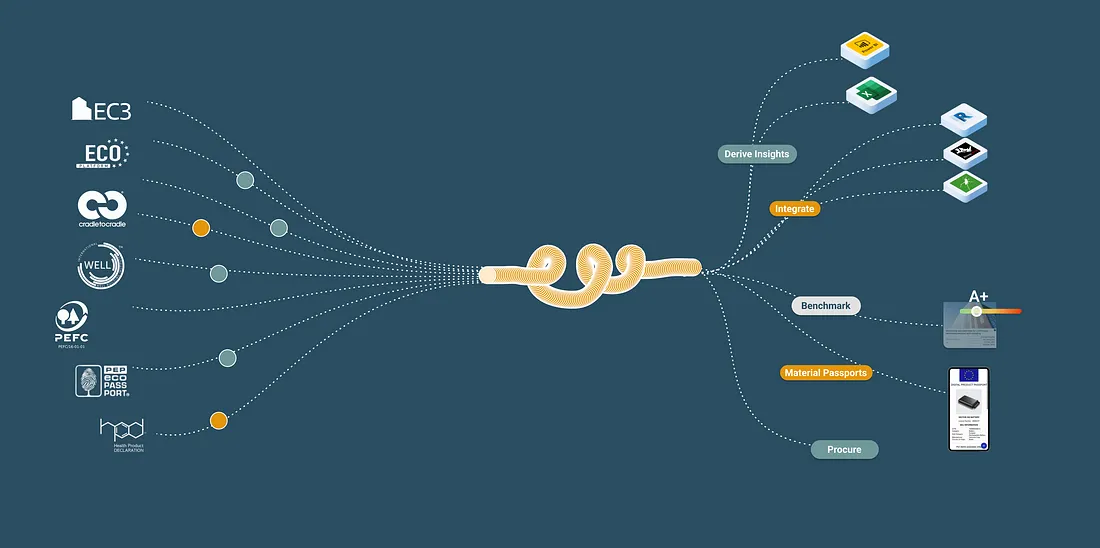
The Age of Integration — 10 Examples of Integrating Carbon Data in AEC, and Why They Matter
By integrating carbon data into the target-setting process, stakeholders can base their goals on real, actionable data, leading to more effective and sustainable project outcomes.
Read more
Net Zero is a Data Integration Problem
In recent years, numerous organizations in real estate and infrastructure have committed to ambitious net zero targets. This means reducing reliance on non-renewable energy and materials and adopting more sustainable design, engineering and procurement practices.
Read more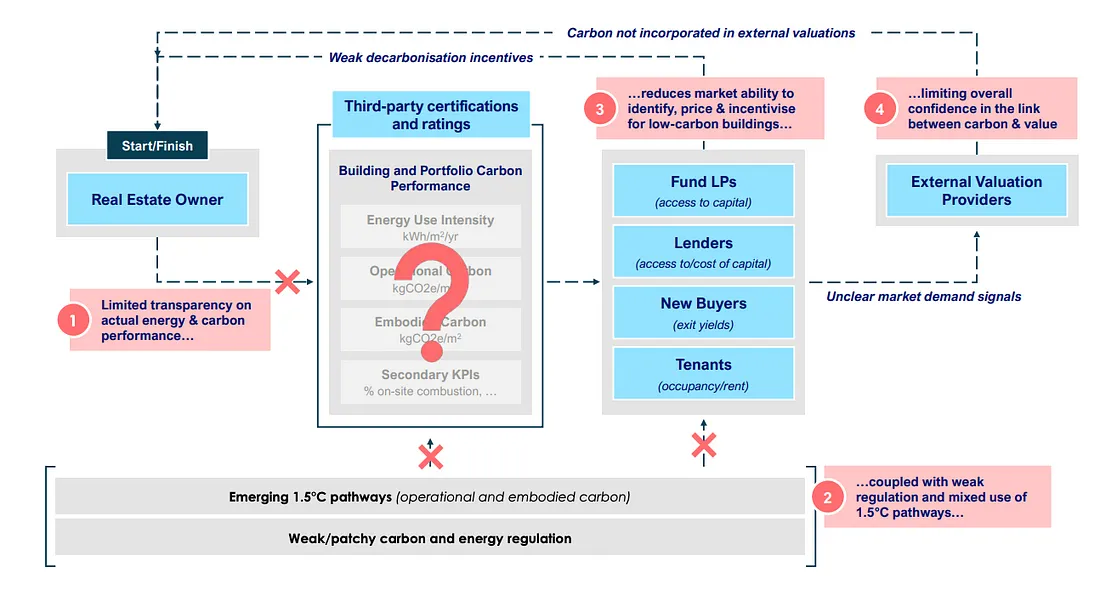
Tapping into the Low-Carbon Real Estate Market
This article is based on a paper by Leaders of the Urban Future (LOTUF) in partnership with Systemiq and highlights the required steps to decarbonizing in the real estate sector for a greener future.
Read more